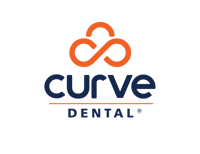How to Create a Winning Business Plan for Your Dental Startup

In the competitive landscape of dental startups, possessing a robust strategy is fundamental to distinguishing between prosperity and adversity. Whether you are a seasoned practitioner or entering the field anew, developing a comprehensive business plan is indispensable for steering your practice towards sustainable growth. Given the dynamic nature of the dental industry, mastering the elements of a strategic plan is imperative for maintaining a thriving enterprise.
An expertly devised business plan not only articulates your mission but also charts a detailed path for your practice’s progression. This encompasses a meticulous market analysis, precise delineation of services, strategic marketing initiatives, financial forecasting, and operational structuring. These elements collectively ensure that your dental startup fulfills patient needs while sustaining a competitive advantage.
This article explores the pivotal components of constructing an effective business plan for your dental startup. From formulating your mission statement to designing a strategic marketing blueprint, we will guide you through each step necessary to establish a practice that epitomizes both patient-centric care and business acumen.
Executive Summary
This section introduces a cutting-edge dental practice focused on providing top-tier dental care services to families and young professionals who prioritize their oral health. The business blueprint emphasizes a strategic marketing approach aimed at expanding reach while maintaining a solid financial foundation. With expectations to break even within the first 12 months and become profitable by year two, the practice is positioned for rapid growth. A commitment to exceptional patient care and innovative services lies at the heart of the operation.
Mission Statement
The mission is to deliver exceptional dental care that not only meets but exceeds customer expectations. The focus is on building a dedicated patient base through high-quality service and exemplary care. This mission emphasizes patient satisfaction and advocates for an enhanced dental experience, adapting services to meet patient needs while fostering a comforting atmosphere.
Company Description
This section articulates a compelling vision and operational framework. Strategically located to serve an identified target market of families and young professionals, the practice provides a comprehensive suite of dental services. The vision involves setting industry benchmarks in patient care, facilitated by advanced technologies and a dedicated team. With robust market analysis and insights into competitive dynamics, the practice is projected as a viable and thriving entity.
Market Analysis
Understanding the dynamic landscape of the dental care industry is a cornerstone of business success. The market analysis delves into the characteristics of the target audience, primarily families and young professionals seeking modern dental care solutions. With the dental industry's market value estimated at USD 120 million and a projected growth rate of 9% annually, the practice is strategically positioned to capitalize on these opportunities. Trends such as increasing health awareness and advancements in cosmetic dentistry offer promising avenues for differentiation.
Services Offered
The practice provides a full spectrum of dental services designed to address a wide range of oral health needs. From preventive care and restorative treatments to state-of-the-art cosmetic dentistry, comprehensive solutions are ensured for all patients. Diagnostic procedures, orthodontics, oral surgery, pediatric dentistry, and emergency care are also included, supported by cutting-edge technology. Additional offerings, such as mobile dental services and sedation dentistry, underscore a patient-focused approach.
Comprehensive Narrative
Crafting a well-thought-out business plan defines business direction and assists in securing funding and addressing potential challenges. A comprehensive narrative begins with an executive summary that encapsulates key components, ensuring it is concise yet informative. Understanding industry developments, patient care advancements, and practice management trends influences the success of a dental practice. This narrative serves as a framework guiding the venture toward sustainability and growth.
Overview of Your Dental Practice
An effective overview offers a succinct yet complete picture of goals, distinguishing features, and structural dynamics. Key elements include the legal structure, location, operational hours, number of exam rooms, expected patient throughput, and a comprehensive list of dental services offered. The overview ends with a company description, elaborating on the organizational structure, mission, and vision.
Unique Selling Proposition
The unique selling proposition (USP) plays a pivotal role in defining a competitive stance. The integration of advanced technology with personalized, comfortable dental experiences distinguishes the practice from others. By combining cutting-edge dental technology and exceptional patient service, the practice offers a tailored treatment journey. Continuous staff training and community engagement further enhance its reputation.
Competitive Analysis
Conducting a competitive analysis anticipates challenges and shapes effective strategies. This involves evaluating competitors' online presence, SEO rankings, and customer interaction approaches. Identifying competitive edges, such as superior customer service, translates into increased market share. The analysis also includes educational sales tactics that empower patients, boosting satisfaction and loyalty.
Marketing Strategies
A well-crafted marketing strategy is crucial for growth and visibility. It should focus on patient acquisition and retention through loyalty programs, membership discounts, and analytics. Empowering prospective patients with information enhances comfort and trust. Adapting strategies based on feedback ensures effectiveness. Online outreach and community events enhance engagement and reach.
Operations Summary
The operations summary outlines day-to-day functions. It details office hours, equipment, and patient flow strategies. Staffing needs are addressed, highlighting the roles of dentists, assistants, and administrative staff. Processes include scheduling, treatment, record-keeping, billing, and post-treatment follow-ups. Safety and infection control protocols are emphasized. Budgeting for construction, equipment, and supplies is essential.
Detailed Services Offered
The practice offers a comprehensive range of services to promote optimal oral health. This includes preventive care, restorative and cosmetic dentistry, orthodontic services, oral surgery, and pediatric dentistry. Emergency care is also available. By embracing the latest technologies, procedures are performed with precision, enhancing patient well-being.
Preventive Care
Preventive care targets the maintenance of oral health across all age groups. Advanced treatments and a compassionate environment help safeguard patients against dental problems. Emphasizing preventive care enhances quality of life and aligns with modern dental standards.
Diagnostic Services
Diagnostic services include X-rays, digital imaging, and routine exams. These tools provide accurate assessments and establish effective treatment plans. Advanced diagnostics support innovative and effective care.
Restorative Dentistry
Restorative dentistry involves treatments aimed at restoring function and aesthetics. This includes fillings, crowns, bridges, and implants. The practice supports its offerings with appropriate legal and financial structures.
Cosmetic Dentistry
Cosmetic services range from teeth whitening to veneers. These procedures cater to clients seeking aesthetic improvements. Including cosmetic offerings enhances profitability and patient satisfaction.
Orthodontics
Orthodontic services support overall business growth. They complement cosmetic offerings and reflect a forward-thinking approach to patient needs. Planning for orthodontics aligns with strategic expansion.
Periodontal Treatments
Although not detailed, the practice likely includes periodontal care within its holistic approach. Managing gum health is vital for comprehensive oral care.
Financial Projections
Financial planning ensures profitability and sustainability. Key elements include startup costs, funding options, income estimates, cash flow statements, balance sheets, and break-even analysis. These help attract investors and set financial milestones.
Breakdown of Funding Requirements
This outlines capital needs and allocation, including leasehold improvements, equipment, inventory, wages, and space costs. A clear breakdown demonstrates financial strategy and management.
Utilization of Startup Funds
This includes purchasing equipment, office supplies, covering real estate costs, and paying initial salaries. Transparency builds investor confidence and supports growth.
Break-even Analysis
Calculates when the practice turns a profit. Strategic projections and cost assessments identify challenges and savings opportunities, guiding the transition from startup to thriving practice.
Projected Profit and Loss
Includes balance sheets, break-even points, and cash flow estimates. This financial foresight sets expectations and provides a roadmap to sustained profitability.
Marketing and Competitive Strategy
A robust marketing and sales strategy ensures growth. Educating patients fosters trust. Monitoring digital metrics optimizes campaigns. Creative initiatives attract and retain patients.
Market Size and Growth Potential
With an estimated market value of USD 120 million and 9% annual growth, the local market presents significant opportunity. Cosmetic dentistry and rising health awareness support demand.
Critical Success Factors
These include personal financial statements, transparent funding allocation, accurate income forecasts, and dental-specific resources. Partnering with specialized lenders enhances funding outcomes.
Operational Plan
Details staffing, equipment, and patient flow. A well-structured plan guides daily functions and long-term goals.
Practice Organization
Describes leadership structure, including CEO, COO, and department managers. Highlights responsibilities and reporting lines for clinical, administrative, and support staff.
Management Structure
Specifies the business structure and identifies financial partners, associates, and advisors. Clarifies operational roles and provides a system of oversight for quality care delivery.
*This content was partially generated by artificial intelligence. It may contain errors or inaccuracies, and should not be relied upon as a substitute for professional advice.

Curve Dental
Welcome to the official blog of Curve Dental. Serving up content about the team behind Curve Dental
